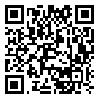BibTeX | RIS | EndNote | Medlars | ProCite | Reference Manager | RefWorks
Send citation to:
URL: http://ioh.iums.ac.ir/article-1-462-en.html
Background and Aims
Biological hazards exist throughout all healthcare settings and include airborne and blood borne pathogens. Health care workers are also subject to exposure to hazardous chemicals such as disinfectants and sterilizing agents. In addition to the traditional aforementioned categories of occupational hazards, health care workers experience the stress of being directly responsible for the care of very sick and dying patients, which, coupled with increasing workloads, can seriously threaten their health and well-being.
Methods
The study population was all hospital staff (# 207), of whom198 health care workers eventually participated in the study. The questionnaires were administered to doctors, nurses and ward orderlies in Shahid Sadoughi Teaching Hospital Yazd, Iran. Data were analyzed by SPSS
11.5 software using Fisher's exact and Chi square tests.
Results
The common occupational health hazards were work-related stress (60.1%), bloodstains on skin (51%), needle-stick injuries (42.9%), assault from patients (21.2%), skin reaction (19.2%), sleep disturbance (15.2%), stew blood on mucosal (3.1%) and use of drugs (4.5%). Nearly 4.5% of the staff used tranquilizers to cope with the work stress. A greater percentage of doctors compared to nurses and ward orderlies used safety precautions such as gloves, facemasks and aprons. 70.2% staff employed regular hand-washing after various procedures 68.2% of staff adopted regularly proper disposal of needles and sharps into separate puncture resistant containers. About 55.6% of the staff recap used needles.
Conclusion
In according to frequent types of occupational related dangers, corporation between chiefs and members of health care center to decrease these seems wishful and we recommend preparing and distributing necessary guidelines with related awareness among these groups.
| Rights and permissions | |
 |
This work is licensed under a Creative Commons Attribution-NonCommercial 4.0 International License. |





